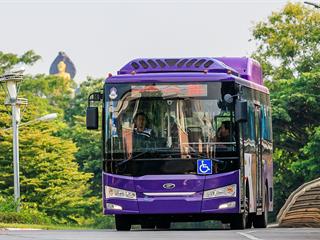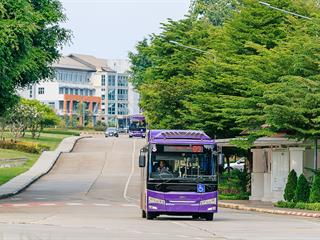
Currently, climate change is intensifying globally, with all regions being affected. This is primarily due to the continuous rise in global greenhouse gas emissions. Human activities in daily life are significant contributors to climate change, impacting social, economic, and environmental dimensions. One of the main greenhouse gases contributing to the climate crisis is carbon dioxide (CO2), which is a major component of greenhouse gases. In response to the global climate crisis, many countries have begun taking tangible steps to address this issue. One popular approach to reducing carbon dioxide emissions is achieving “Carbon Neutrality,” where the amount of greenhouse gas released into the atmosphere equals the amount absorbed, resulting in net-zero emissions.
At the 26th UN Climate Change Conference (COP26) in Glasgow, Scotland, many nations declared their commitment to achieving carbon neutrality. Thailand also expressed its intention to reduce greenhouse gas emissions, with a goal of achieving carbon neutrality by 2050. The concept of carbon neutrality involves three main processes.
1. Reduction: Cutting greenhouse gas emissions, such as using renewable energy instead of fossil fuels.
2. Absorption: Capturing greenhouse gases from the atmosphere, for example, by planting forests to enhance natural carbon sinks.
3. Offsetting: Compensating for emissions by purchasing carbon credits (Carbon Credit Offset).
The University of Phayao is an institution with great potential for developing, conserving, and restoring natural resources and the environment. As such, it recognizes the crucial importance of reducing greenhouse gas emissions. In line with the national strategy of “green growth,” the university is fully committed to achieving carbon neutrality. To this end, the University of Phayao has included key performance indicators in its strategic plan for 2024-2028, with the goal of becoming a carbon-neutral university. This involves transitioning to eco-friendly energy sources and minimizing carbon dioxide emissions.
The largest source of greenhouse gas emissions at the University of Phayao comes from energy consumption, particularly in electricity use and transportation. Previously, the buses servicing the university ran on Natural Gas for Vehicles (NGV), which emit greenhouse gases. Recognizing that continuing to use the same fuel system would not support its carbon neutrality goals, the university has decided to transition all public buses to electric vehicles (EV buses). This shift aligns with government policies and those of the Ministry of Higher Education, Science, Research, and Innovation to reduce carbon emissions and promote zero-emission vehicles.
Data collected over three months (May to July 2024) from the university’s buses revealed the following distances traveled:
1. May 2024: 63,809 kilometers
2. June 2024: 110,778 kilometers
3. July 2024: 116,900 kilometers
When calculating the greenhouse gas emissions based on these distances and comparing emissions from gasoline, diesel, and electric buses, the following data emerged:
On average, gasoline buses emit 0.56 kgCO2e per kilometer, diesel buses emit 0.55 kgCO2e per kilometer, and electric buses emit only 0.36 kgCO2e per kilometer. However, if electricity for the buses is generated from clean energy sources (such as solar power), the emissions from electric buses can be reduced to zero, achieving sustainable carbon neutrality.
The eco-friendly transportation initiative at the University of Phayao, particularly the deployment of battery-electric buses, demonstrates the university’s capacity to lead in greenhouse gas management. This initiative aligns with the university’s strategic development plan for 2024-2028 and its goal of becoming a sustainable green university.
Dr. Pruch Pingmuenglek
Environmental Supervisor
Division of Building and Facilities









